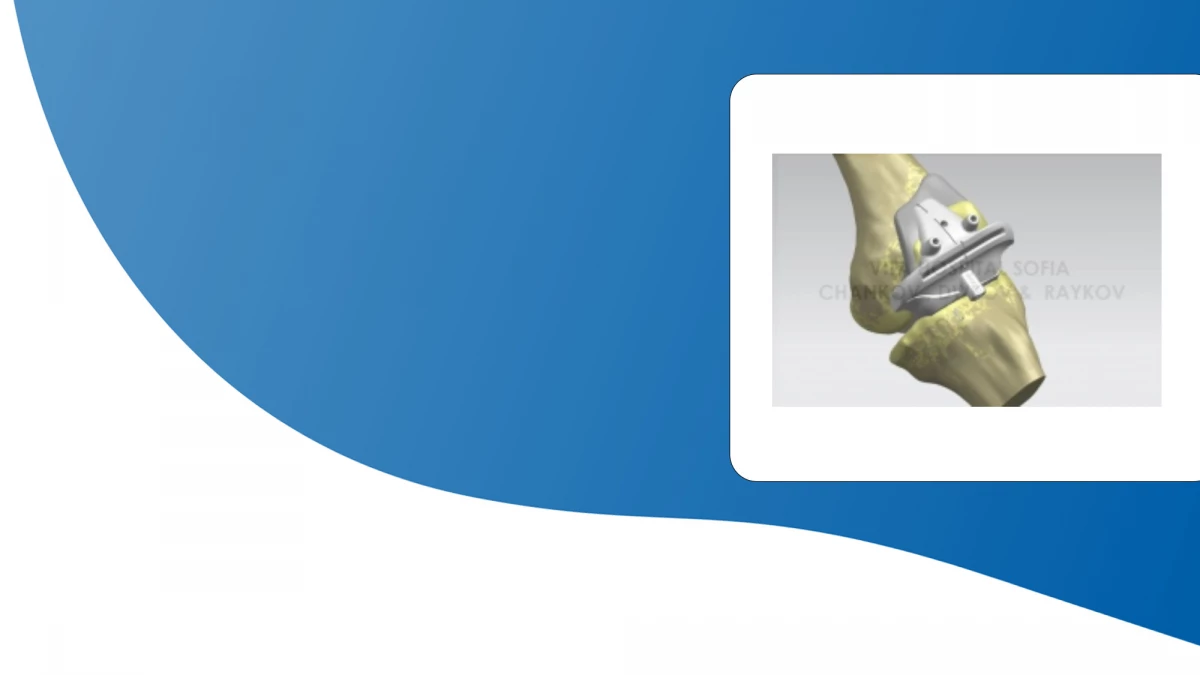Mean operative time and X-ray exposure, typical for this kind of operations, have been reduced by about 60%
Surgeons from the Orthopedic department of "Vita" Hospital Dr. Chanko Chankov and Dr. Vladislav Raikov carried out an operation to a man by using an innovative method. The case concerns a 35-year-old man who has had an accident with a fractured left lower leg three years ago. He has been treated operationally in another hospital. As a result, his left lower leg was healed incorrectly in 35 degrees external rotation (Charlie Chaplin foot type) and was 18 mm longer than the other, which in its turn was treated with gypsum a couple of years ago on the occasion of fracture and recovered with great shortening and axial displacement.
The patient complained of pain in the ankle, knee and hip joint, limping and limited sports activity. The main problem was the reduced working performance.
Because of these clinical indications and for the prevention of early arthritic changes in adjacent joints and the young age of the patient, a surgical treatment was undertaken. Surgeons from the Orthopedic department of "Vita" Hospital had a chance with the advice of other colleagues from Switzerland to create and use a special disposable polymer instrument, which effectively turned the cutting tool where needed. Two things were adjusted with this instrument at the same time - the rotation and the length of the limb. Subsequently a special plaque was placed to ensure stability, while the bones heal. Thus operational and X-ray exposure time, typical for this kind of operations, were reduced by about 60%.
The process lasted four weeks - from examination to the operation. It began with specialized diagnostics - X-rays to calculate the axis of loading and approximately measuring of the deviation from the geometry of normal human bone in two-dimensional space. The preparation continued by taking pictures from scanner and subsequently a three-dimensional analysis of the bone morphology was conducted. Special 3D images were created of both drumsticks with calculation of the errors in the previous operation. 3D bone models of healthy people from a special database supported the empirical analysis. Through a special algorithm, developed by Dr. and Mr. Raykov Dakov, based on applications for 3D modeling, a computer model of the unique for this operation instrument was generated.
The design of the instrument took about a week. The generated 3D image of the bone and the instrument enabled the surgeons to examine the pathology from every angle as well as what will happen if the location of the bone cuts was changed. Thus they were able to choose the least traumatic intervention. In order for the result to be closest in absolute terms to the normal anatomy of the lower leg, all factors surrounding soft tissues that surround the bone (muscles and tendons) were considered.
Thanks to the 3D images and surgical intervention plan, engineer Dakov and Dr. Raikov designed a patient-specific surgical guide. The guide was constructed in a way that it matched the unique shape of the patient's bone in only one place - as a key and a lock, so that the surgeon could not go wrong during the actual surgery. In addition to that drillings were created as well as leading channels and slots in order to fulfill both cuts, followed by translation and rotation of the bone, all laid down in the preoperative plan, with the least possible trauma and blood loss.
Thanks to this innovative method and data from the 3D image, it was possible to see how serious the deformation of the affected bone actually was, which is invisible to the human eye with plain radiography, especially by normal clinical examination. Thus it was possible to take the right decision for the patient’s surgery.
The patient said he had sought help in many places, but everywhere measurements were 2.5 times more inaccurate than those measured by the team of "Vita". "The very thought that I could survive another failed operation made me agree with your treatment plan," said the patient after the surgery.


 On this page, you can change your choices at any time after you have read and understood our
On this page, you can change your choices at any time after you have read and understood our